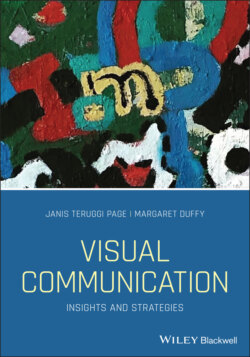Читать книгу Visual Communication - Janis Teruggi Page - Страница 28
Visual Rhetoric
ОглавлениеThe photograph in Figure 1.5 became an Internet sensation. Taken at the premiere of the film, Black Mass, almost everyone pictured clutches a smart phone and is excitedly trying to find an angle in order to take a photo of a celebrity. Only one individual stands out – an older woman who is serenely observing the event – without a camera.
Why did the image resonate with so many? Tweets and shares often commented that the woman was the only individual living in the moment and truly having a genuine, unmediated experience. And of course, the image resonated because it was unusual – the woman's behavior was unexpected and outside the bounds of today's culture. This can be explained through understanding the cognitive perception of selectivity – our brains draw conclusions from stimuli that are significant within a complicated visual experience. Whether the woman was, indeed, living in the present or she didn't own or use a smartphone is unanswered. Nevertheless, by showing something outside the norm, the image communicated aspects of culture to many people.
In the following “What's Ahead” section, you will see a preview of the book's chapters and the many methods of visual analysis that you will learn – including semiotics, visual rhetoric, narrative analysis (how visual compositions tell stories), metaphor analysis (how visual images propose comparisons), and fantasy theme analysis (how visual messages converge in groups to develop cohesive understanding).
Figure 1.5
Source: John Blanding/The Boston Globe/Getty Images.
